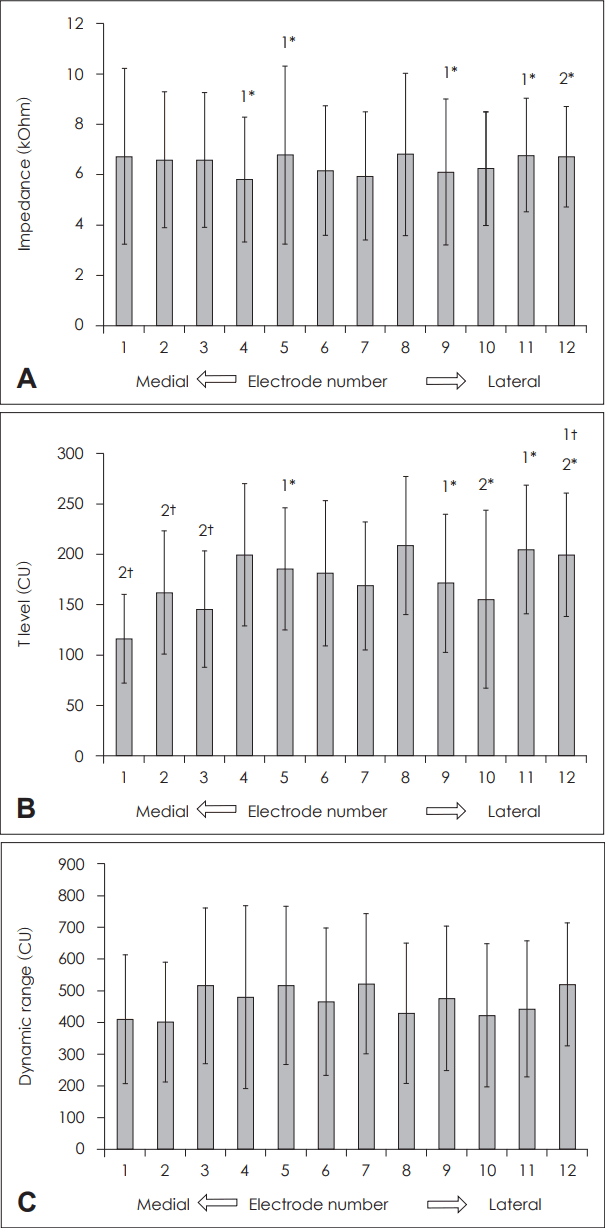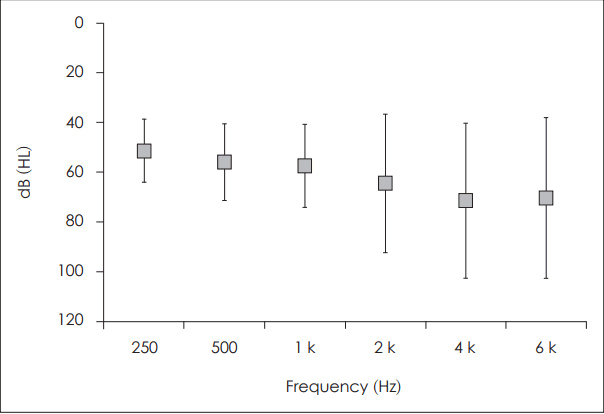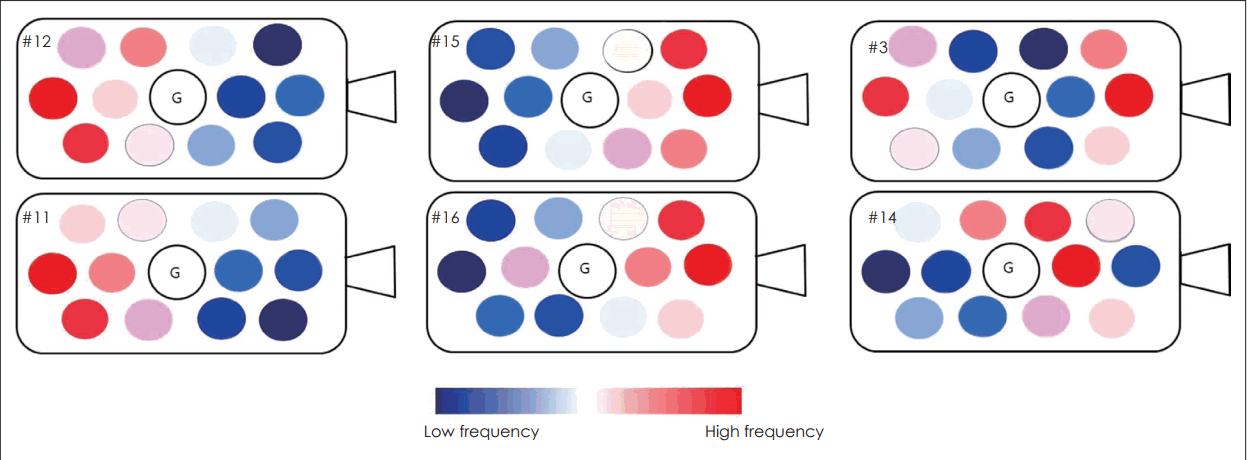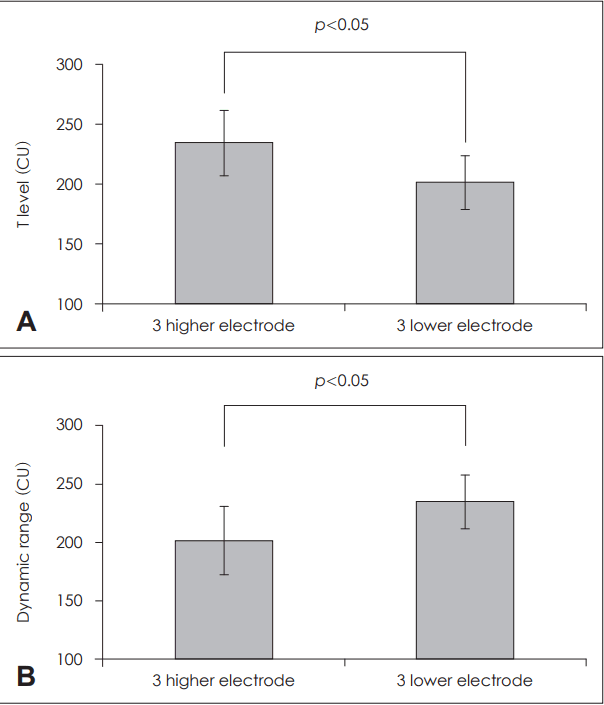1. Lesinski-Schiedat A, Frohne C, Illg A, Rost U, Matthies C, Battmer RD, et al. Auditory brainstem implant in auditory rehabilitation of patients with neurofibromatosis type 2: Hannover programme. J Laryngol Otol Suppl. 2000; (27):15–7.
2. Eisenberg LS, Maltan AA, Portillo F, Mobley JP, House WF. Electrical stimulation of the auditory brain stem structure in deafened adults. J Rehabil Res Dev. 1987; 24(3):9–22.

3. Otto SR, Brackmann DE, Hitselberger WE, Shannon RV, Kuchta J. Multichannel auditory brainstem implant: update on performance in 61 patients. J Neurosurg. 2002; 96(6):1063–71.

4. Schwartz MS, Otto SR, Shannon RV, Hitselberger WE, Brackmann DE. Auditory brainstem implants. Neurotherapeutics. 2008; 5(1):128–36.

5. Lenarz M, Matthies C, Lesinski-Schiedat A, Frohne C, Rost U, Illg A, et al. Auditory brainstem implant part II: subjective assessment of functional outcome. Otol Neurotol. 2002; 23(5):694–7.

6. Ebinger K, Otto S, Arcaroli J, Staller S, Arndt P. Multichannel auditory brainstem implant: US clinical trial results. J Laryngol Otol Suppl. 2000; (27):50–3.

7. Maini S, Cohen MA, Hollow R, Briggs R. Update on long-term results with auditory brainstem implants in NF2 patients. Cochlear Implants Int. 2009; 10 Suppl 1:33–7.

8. Colletti V, Fiorino F, Sacchetto L, Miorelli V, Carner M. Hearing habilitation with auditory brainstem implantation in two children with cochlear nerve aplasia. Int J Pediatr Otorhinolaryngol. 2001; 60(2):99–111.

9. Choi JY, Song MH, Jeon JH, Lee WS, Chang JW. Early surgical results of auditory brainstem implantation in nontumor patients. Laryngoscope. 2011; 121(12):2610–8.

10. Grayeli AB, Bouccara D, Kalamarides M, Ambert-Dahan E, Coudert C, Cyna-Gorse F, et al. Auditory brainstem implant in bilateral and completely ossified cochleae. Otol Neurotol. 2003; 24(1):79–82.

11. Sanna M, Khrais T, Guida M, Falcioni M. Auditory brainstem implant in a child with severely ossified cochlea. Laryngoscope. 2006; 116(9):1700–3.

12. Sennaroglu L, Ziyal I, Atas A, Sennaroglu G, Yucel E, Sevinc S, et al. Preliminary results of auditory brainstem implantation in prelingually deaf children with inner ear malformations including severe stenosis of the cochlear aperture and aplasia of the cochlear nerve. Otol Neurotol. 2009; 30(6):708–15.

13. Colletti V, Carner M, Miorelli V, Guida M, Colletti L, Fiorino F. Auditory brainstem implant (ABI): new frontiers in adults and children. Otolaryngol Head Neck Surg. 2005; 133(1):126–38.

14. Sennaroglu L, Colletti V, Manrique M, Laszig R, Offeciers E, Saeed S, et al. Auditory brainstem implantation in children and non-neurofibromatosis type 2 patients: a consensus statement. Otol Neurotol. 2011; 32(2):187–91.
15. Moore JK. The human auditory brain stem: a comparative view. Hear Res. 1987; 29(1):1–32.

16. Ling D. Speech and the hearing-impaired child: theory and practice. 2nd ed. Washington, DC: Alexander Graham Bell Association for the Deaf and Hard of Hearing;2002.
17. Otto SR, Shannon RV, Wilkinson EP, Hitselberger WE, McCreery DB, Moore JK, et al. Audiologic outcomes with the penetrating electrode auditory brainstem implant. Otol Neurotol. 2008; 29(8):1147–54.

18. Vincent C, Zini C, Gandolfi A, Triglia JM, Pellet W, Truy E, et al. Results of the MXM Digisonic auditory brainstem implant clinical trials in Europe. Otol Neurotol. 2002; 23(1):56–60.

19. Otto S, Staller S. Multichannel auditory brain stem implant: case studies comparing fitting strategies and results. Ann Otol Rhinol Laryngol Suppl. 1995; 166:36–9.
20. Kuchta J, Otto SR, Shannon RV, Hitselberger WE, Brackmann DE. The multichannel auditory brainstem implant: how many electrodes make sense? J Neurosurg. 2004; 100(1):16–23.






 PDF
PDF Citation
Citation Print
Print






 XML Download
XML Download